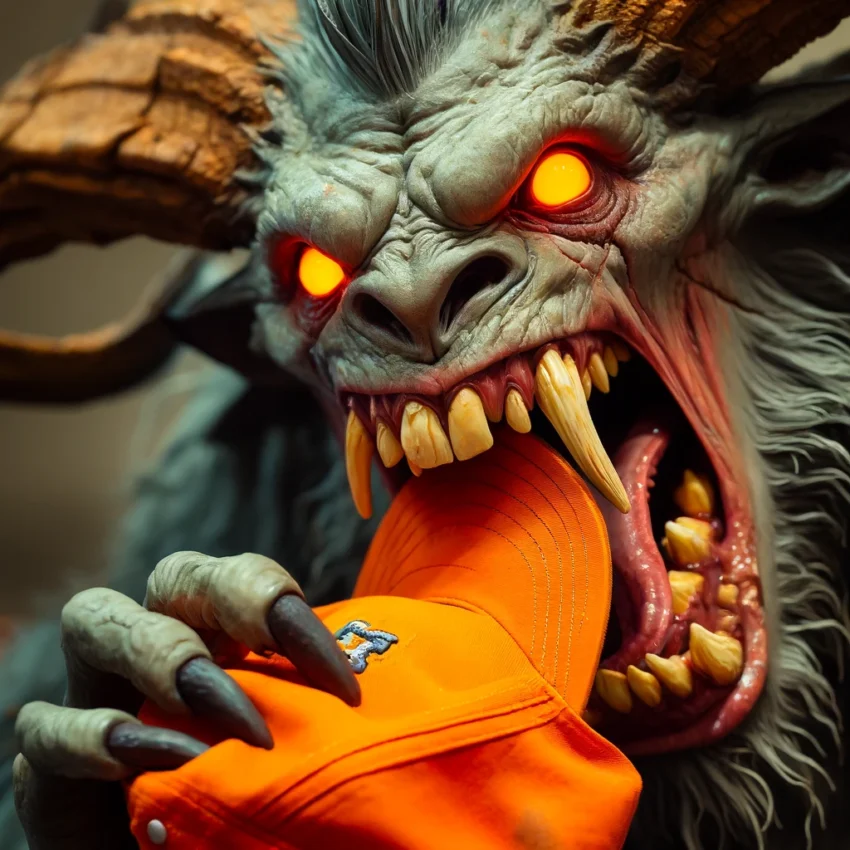
Hodags | The Most Fearsome Creature of the Lumberwoods
Hodags play a vital role in maintaining the ecological balance in the Northwoods of Wisconsin, Michigan and parts of Minnesota. Over the past 50 years, hodag evolution has accelerated, creating the monstrous beast we find today. See the latest on chimeras at the end of this article. Get the full monster profile after the jump.
Get The Latest Hodag News Now
History of Hodag Encounters
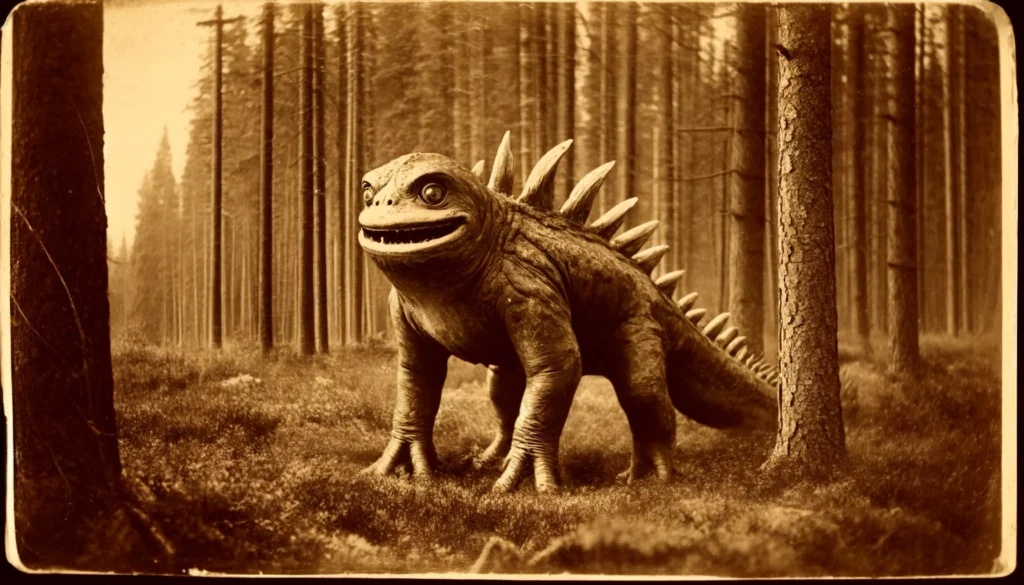
Hodags have always been part of the Northwoods region of Wisconsin and parts of Michigan’s Upper Peninsula and Minnesota. Various Oneida and Chippewa tribes have told tales of their encounters. It wasn’t until European and American settlers moved into the area that the encounters became terrifying.
In the 1850s, the lumber industry took off in northern Wisconsin. Lumberjacks wrote and told about their run-ins with these forest monsters. As they harvested the deep, dark forests, the hodags would defend their territory. Many lumberjacks lost limbs while fighting off a hodag attack.
In 1893, Eugene Shepard captured a live Hodag and exhibited it at the Oneida County Fair. The exhibit drew national attention, and The New York Times, Washington Post and Philadelphia Inquirer reported about the monster.
After the frenzy and overharvesting of the woodlands, it seems the hodag disappeared or went extinct. But that’s not true. Recently, an evolved monster has come out of the Northwoods to terrorize humanity once again.
Rapid Evolution
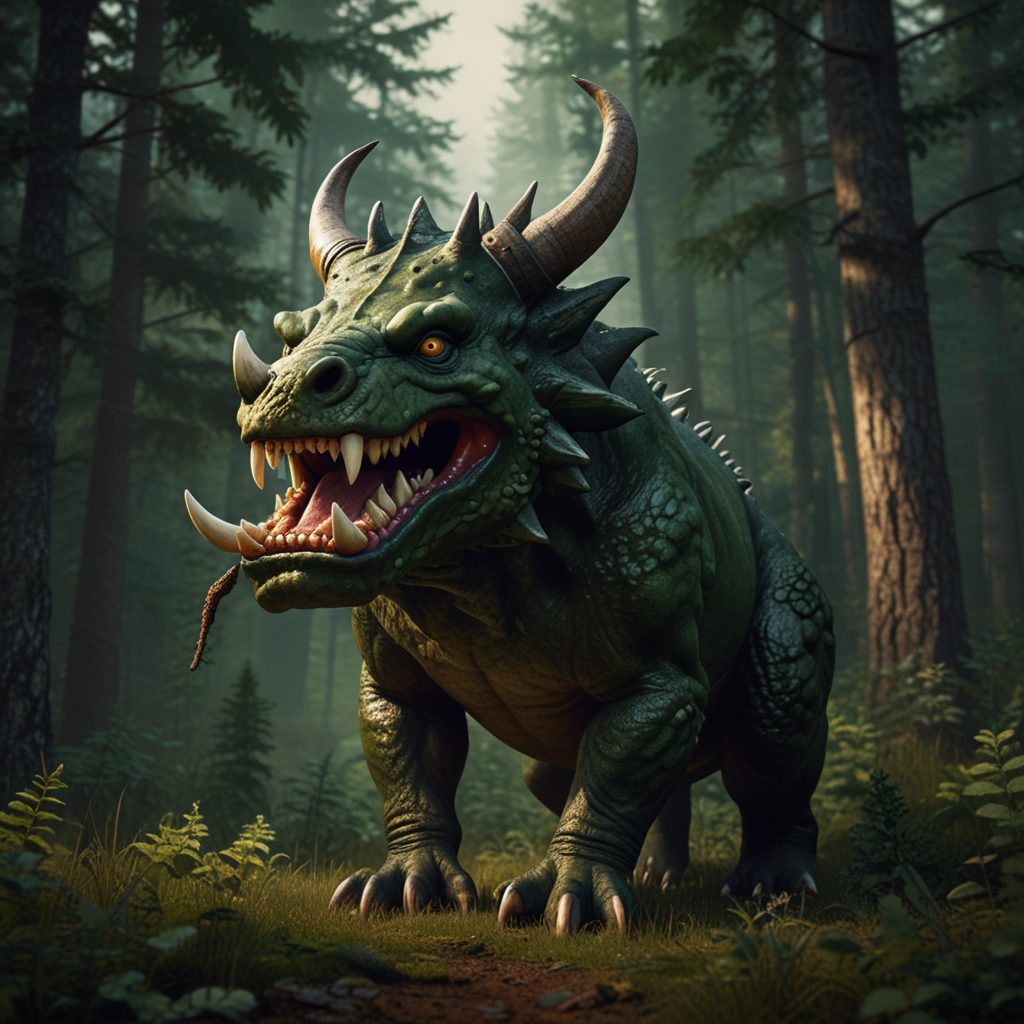
Hodags have undergone rapid evolution and adaptations in the past 50 years. It appears insular gigantism, a zoological term for animal growth, has taken hold. Here’s what we know.
Reasons for rapid evolution
The insular gigantism seen in the hodag can be traced to 2 reasons:
- Trophic cascade
- Plentiful hunting territory
In this case, trophic cascade refers to the lack of other apex predators in hodag territory. Its competitors, humans and wolves, have not been active in the Northwoods. For humans, there’s less interest in hunting deer and fishing. This leaves more protein to help the hodag grow to larger sizes to take up the slack. As for wolves, the gray wolves in the area have decreased in number due to inbreeding, disease, and hunting by humans.
There’s also a massive of area (over 1 million acres) with low human density. This provides an ample territory for hodags. A large territory, as well as high prey populations, allows these creatures to grow to larger sizes.
Physical Characteristics
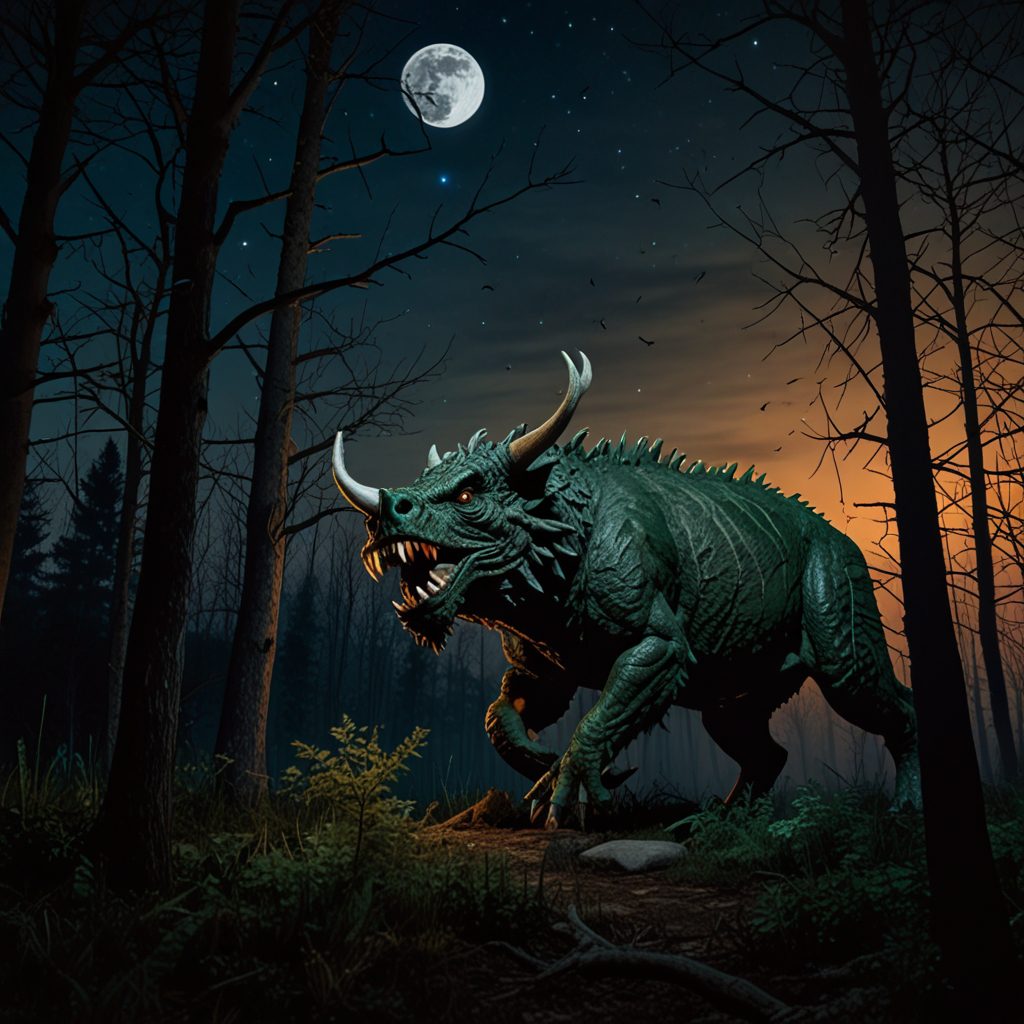
The current hodag has evolved and adapted from its more frog-reptilian origins. At first, the hodag grew to 24″ to 30″ at the shoulder, and measured up to 7′ from nose to tail tip. That’s not the case any more.
The hodag is now the size of a compact car, weighing about 1 ton. It continues to have a hide resistant to arrows, hunting rifles, and cold temperatures.
Eye color variations remain the same. They can be a glowing green, orange or red. Scientists believe this monster can see in the infrared or thermal range. This has not been conclusively confirmed.
Also, the hodag remains amphibious, but this may change as the beast spends more time on land rather than lakes.
Adaptations Happening Now
Cryptozoologists in the field have noted adaptations the hodag has developed over a 50-year period (the equivalent of 5 generations):
- Longer horns with hooks to better maul prey and fight other hodags during mating season
- An extended snout to warm cold air before entering its lungs
- Longer and more jagged teeth to better grip and shred meat
- Thicker hide with more fat to keep internal organs and blood warm in winter
- Development of opposable thumbs and longer claws (possibly to climb trees and hold prey)
- Losing its long tail (possibly because predators can grab infants-to-juveniles to devour them)
- Increased running speed of 35 mph at full sprint
Overall, it appears the hodag is developing into a true, fearsome forest monster. Scientists have also noted that the hodag seems to follow the razorback hog‘s evolutionary developments.
Habitat
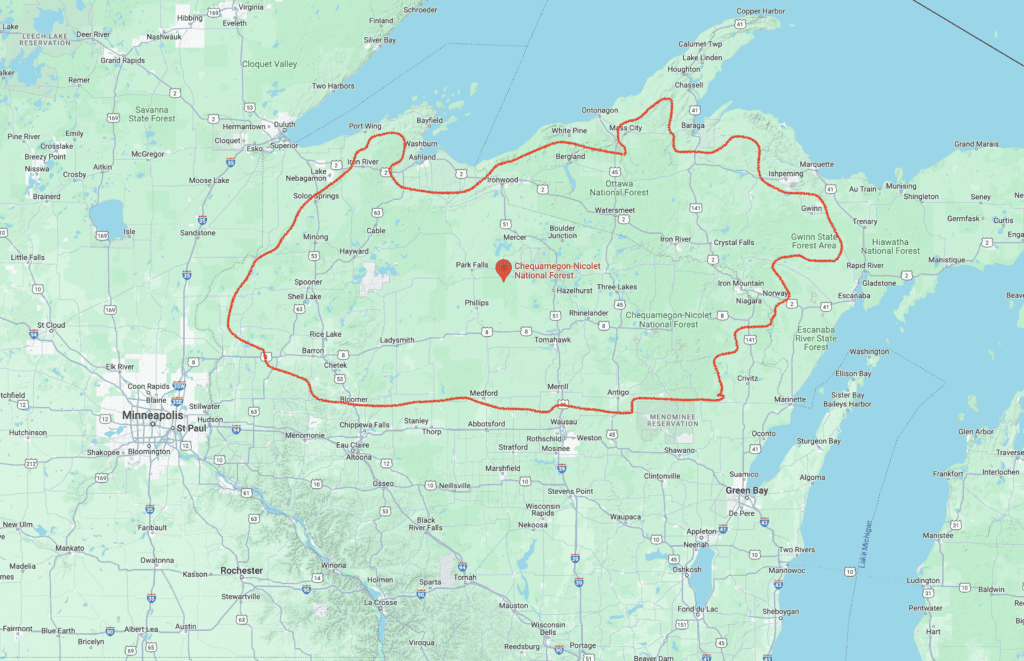
Hodag territory extends across northern Wisconsin into the Upper Peninsula of Michigan. It’s over 1 million acres of wetlands, rivers, lakes, and dense forests. This area is ideal since there’s a low human population density and plentiful prey.
In winter, the habitat goes under a deep freeze with a similar climate to Manitoba. Normally, a hodag would hibernate like most amphibious creatures, but recent adaptations allow it to hunt all-year long.
The remaining habitats of in the lower section of Wisconsin would also be suitable for hodags, but there are other apex predators in those sections. In the Driftless Area, cougars roam the bluffs. These big cats have eaten young hodags, limiting the cryptids from inhabiting the area. In the eastern and southeastern sections of the state, dogmen hunt the farmland, limiting prey for the growing hodag species.
Behavior & Temperament
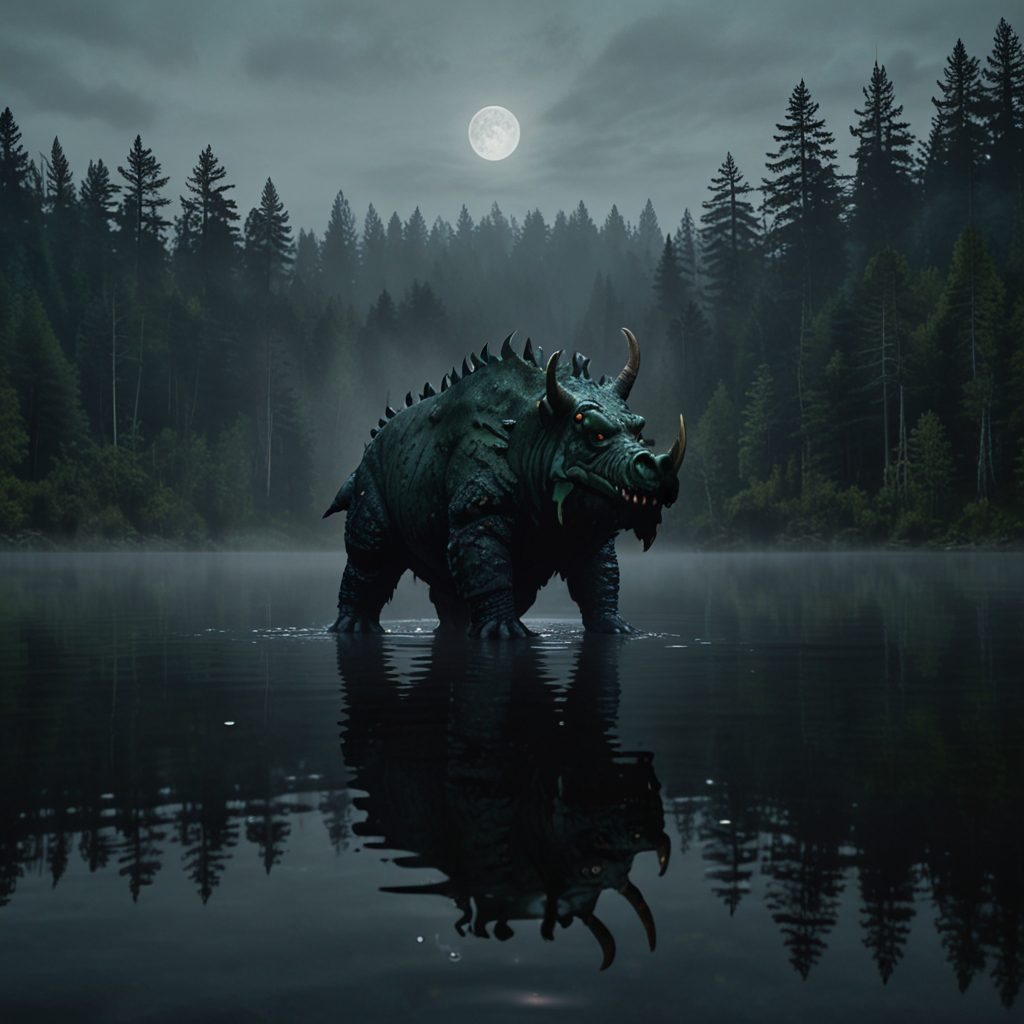
There’s no simpler way to put it: Hodags are mean, ornery, territorial, and have very bad attitudes. The next animal with this temperament is the Tasmanian Devil.
Hodag mating season is something behold: The monsters fight non-stop. There is no courting. It’s a forest-wide brawl. Tourists in the area have been trampled or inadvertently gored for getting too close to a ‘mating’ pair. The hodag couple then eats the injured tourist.
Hodags tend to make lairs by burrowing in the ground, finding caves in hills, or making a dam-like structure in a lake or river. The location depends on where the beast finds its prey. If it eats a large amount of fish or crawfish, then the lair will lie upon or near a body of water. For hodags that eat carrion, deer, campers, livestock, pets or other small mammals, it will be on land.
Signs of Hodag Activity
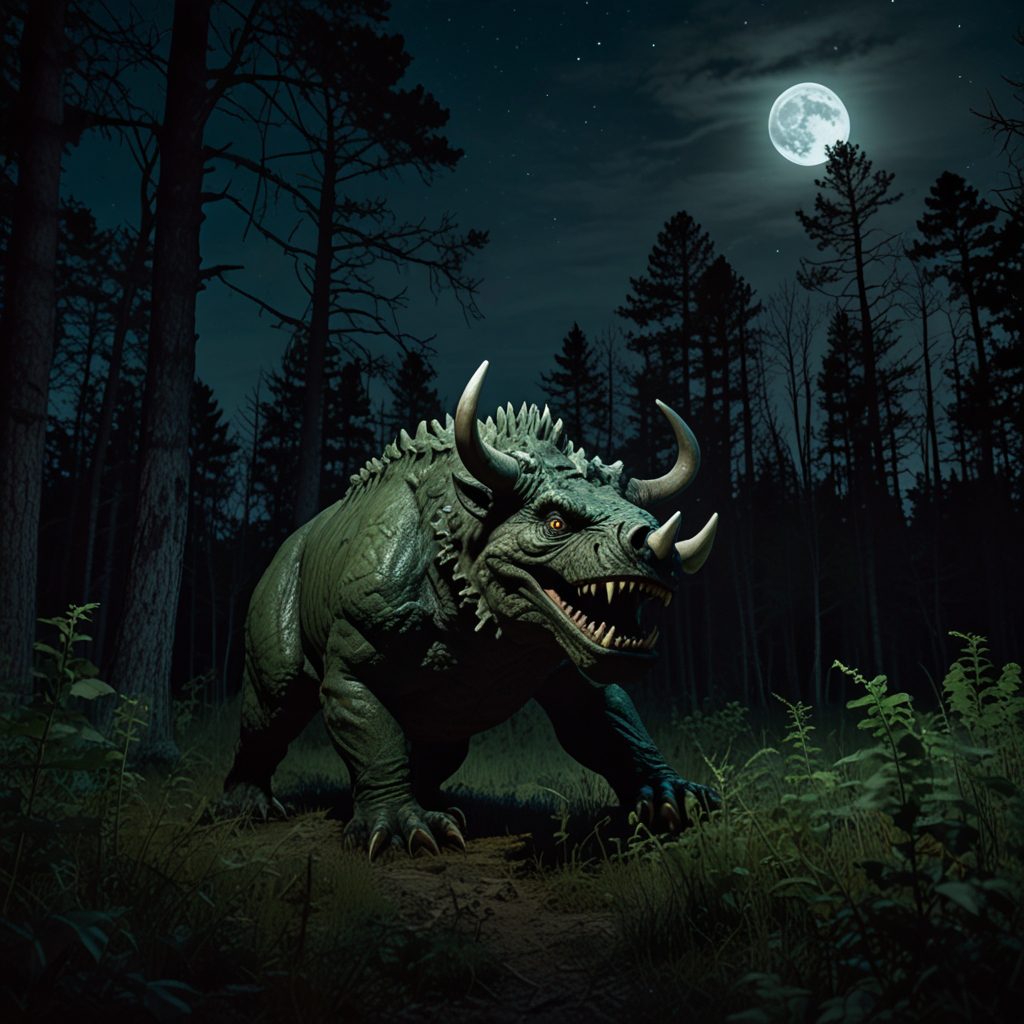
If a hodag is in the area, you may notice the following signs of activity:
- Unusual claw marks on trees
- Trampled vegetation
- Deep guttural growls coming from the darkest areas of a forest
Diet & Predation
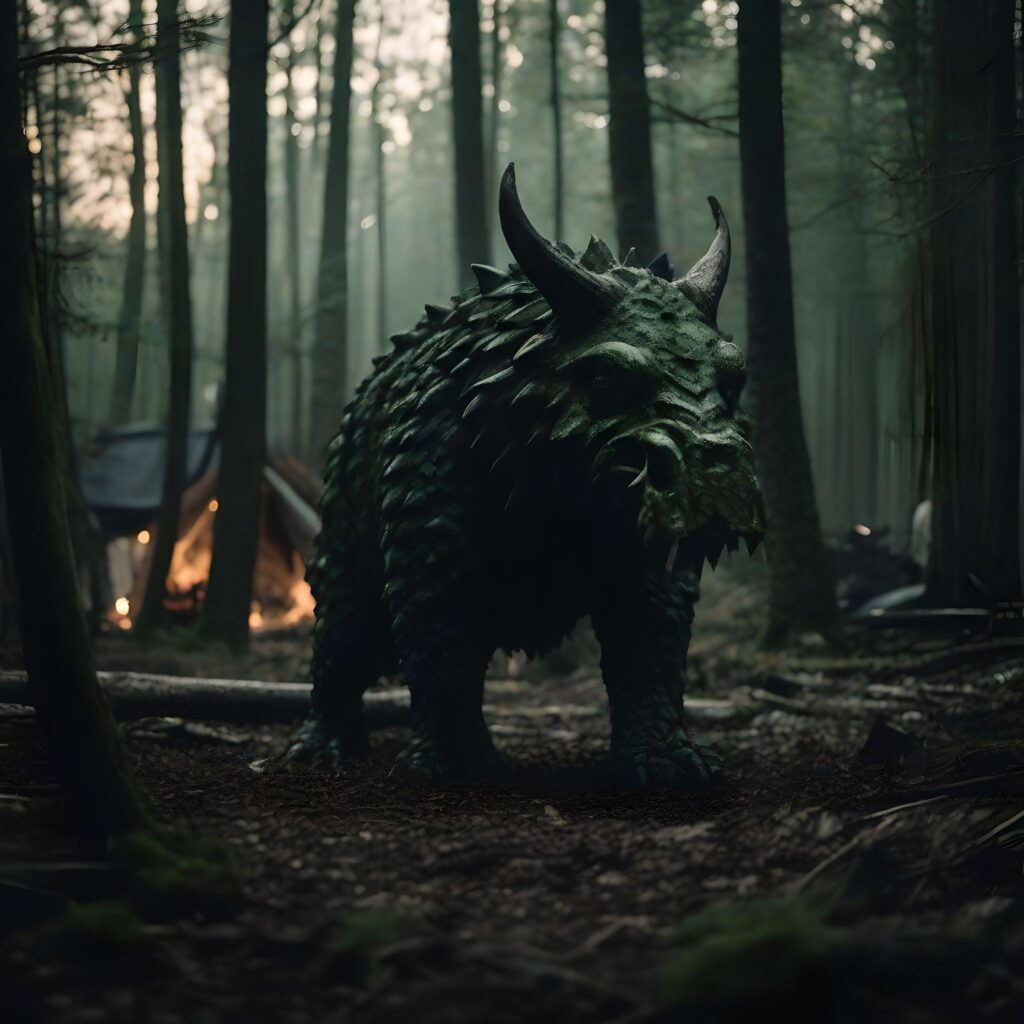
Hodags are carnivores and hunt other animals. Their favorite prey includes:
- Carrion
- Deer (preferred prey)
- Livestock
- Fish (trout, bass, muskellunge, catfish, and other freshwater fish)
- Crawfish
- Pets (mainly small-to-medium size dogs and all cats)
- Forest animals (raccoons, skunks, foxes, rabbits, otters, coyotes, and others)
Contrary to legend, a hodag doesn’t seek out or attack humans as prey unless they’ve died (carrion), starving, or humans attack the monster. A mother hodag will attack humans if they enter her territory, and she has young.
Hodags also avoid eating other apex predators like wolves, cougars, and black bear.
Frankly, a hodag will eat any critter that fits in its mouth. They hunt either in the day or night, and they are opportunistic hunters. Hodags have a ravenous hunger and will feed all day if food is present.
Safety Precautions
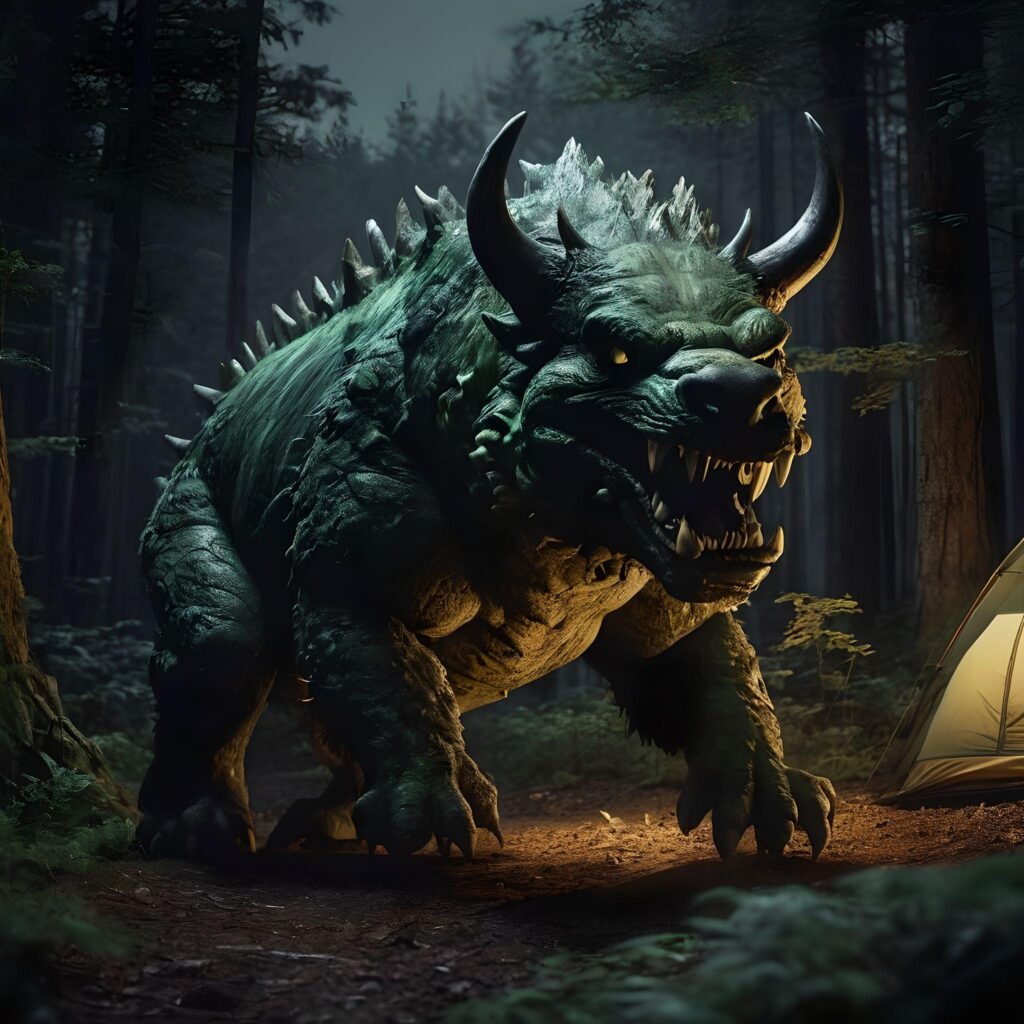
The Wisconsin Department of Natural Resources state these are the best ways to protect yourself from hodag attacks:
- Avoid the deepest, darkest forests in the Northwoods
- Keep your pets secure when camping
- Don’t leave meat out at your campsite (grilling out, BBQ’ing, etc.)
- Make loud noises
- Shine flashlights directly in a hodag’s eyes
- Call authorities and park rangers immediately
- Remain vigilant in hodag territory
Conservation Status
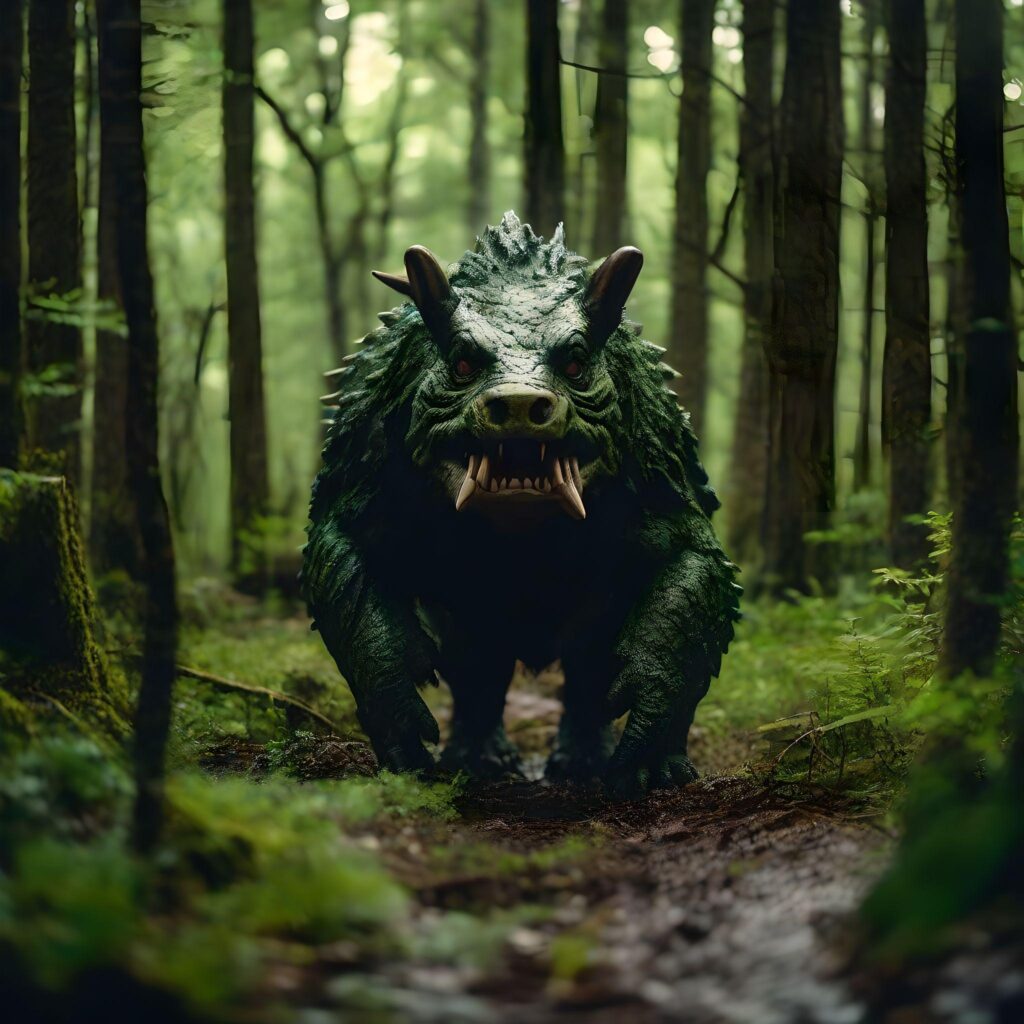
Hodags are an endangered species. Authorities will try to protect hodags much like native bear populations. They play a vital role in maintaining the ecological balance in the Northwoods. Hodags remain the best predator to ensure healthy deer populations for hunters. Police are authorized to arrest hodag poachers, and punishment for killing a hodag includes fines (over $100,000) and imprisonment (mandatory-minimum sentencing) of 10-years in jail.
BREAKING NEWS: Hodag-Human Chimera Found In Boulder Junction!
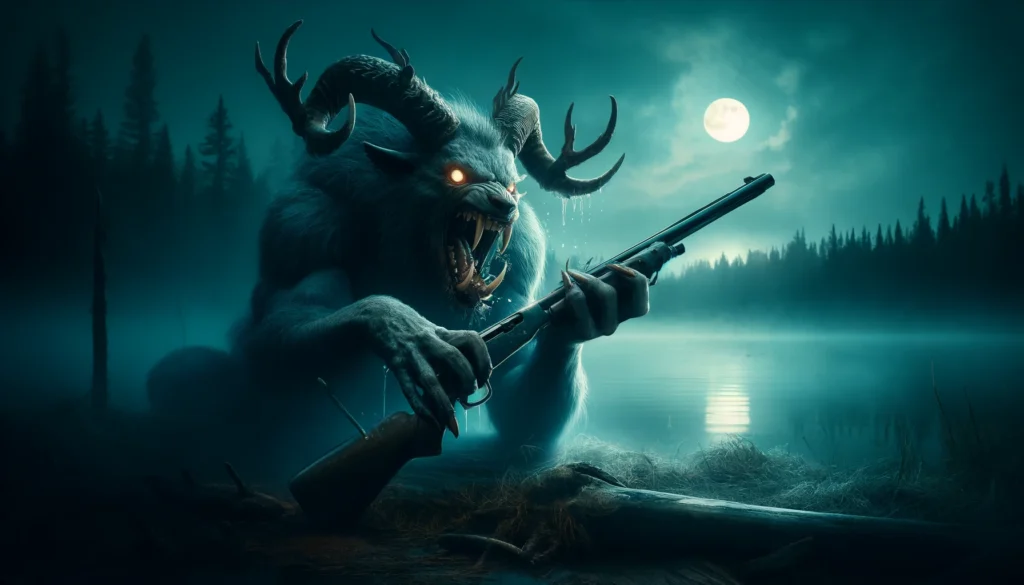
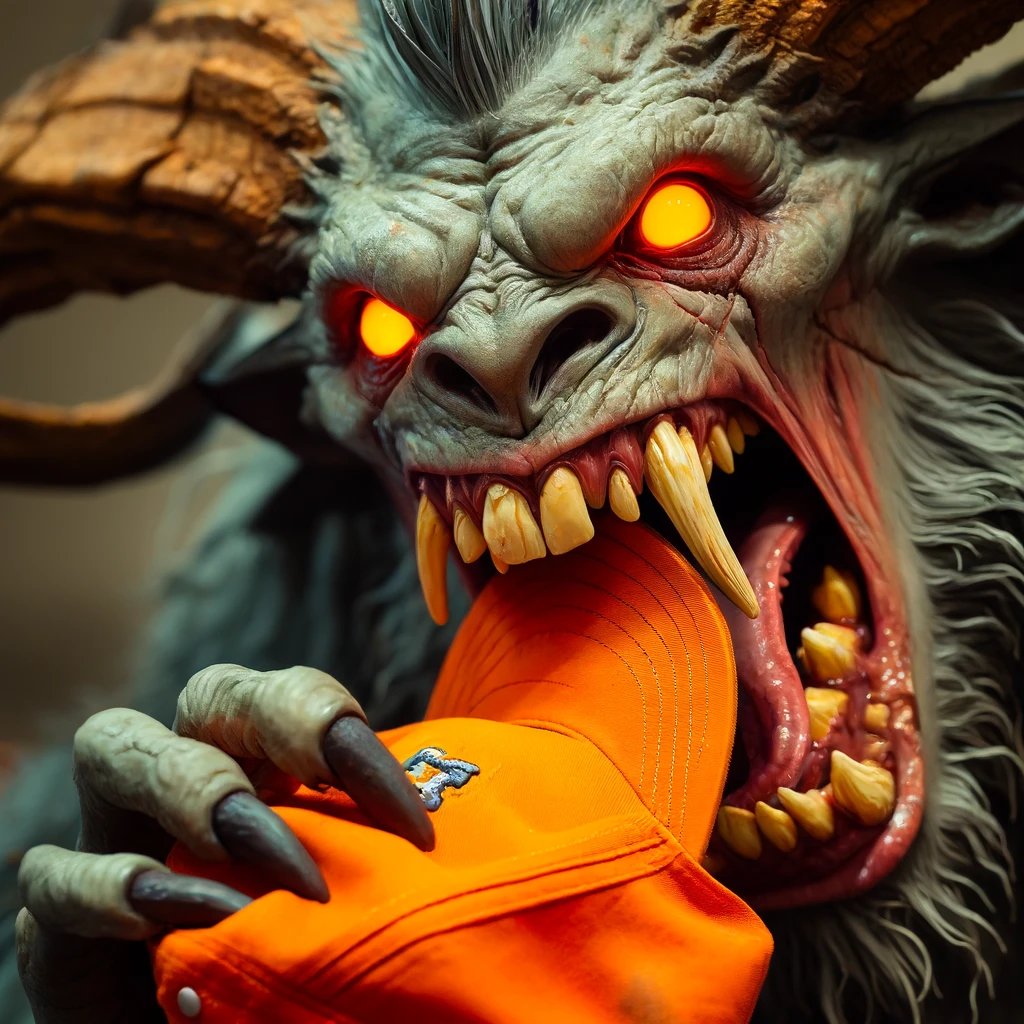
It appears mad science is at play as a hodag-human chimera was spotted tearing apart a hunting party near Boulder Junction, Wisconsin. The chimera ripped limbs from torsos and took the hunters’ body parts to a hidden lair. This is a developing story. Stay tuned to Monster Bureau for updates …
Sources
While this article is fiction, I did research the hodag as well as the science behind the science fiction. You can find those sources below:
“Citations – The Legend of The Hodag.” The Hodag, thehodag.weebly.com/citations.html.
“Hodag.” Wikipedia, Wikimedia Foundation, 31 May 2024, en.wikipedia.org/wiki/Hodag.
“The Hodag.” Wisconsin Historical Society, wisconsinhistory.org/Records/Article/CS16353.
“What in the World Is a Hodag?” Happy the Hodag, happy-the-hodag.com/pages/about-us.
Bright, Emily. “The Legend Of The Hodag.” Wisconsin Life, 1 Apr. 2016, wisconsinlife.org/story/the-legend-of-the-hodag/.
Ripple, William J., et al. “What is a Trophic Cascade?” Trends in Ecology & Evolution, vol. 31, no. 11, 2016, pp. 842-849, https://trophiccascades.forestry.oregonstate.edu/sites/default/files/Ripple%20et%20al%20What%20is%20a%20TC.pdf.
Polis, Gary A., et al. “When is a Trophic Cascade a Trophic Cascade?” Trends in Ecology & Evolution, vol. 15, no. 11, 2000, pp. 473-475, https://trophiccascades.forestry.oregonstate.edu/sites/default/files/Polis%202000.pdf.
“Trophic Cascade.” Wikipedia, Wikimedia Foundation, 31 May 2024, en.wikipedia.org/wiki/Trophic_cascade.
Libretexts. “19.3: Trophic Cascades.” Biology LibreTexts, Libretexts, 14 Dec. 2023, bio.libretexts.org/Courses/Gettysburg_College/01:_Ecology_for_All/19:_Food_Webs/19.03:_Trophic_Cascades.
“Insular Gigantism.” BYJU’S, byjus.com/biology/fosters-rule/#Insular-Gigantism.
“Definition > Insular Gigantism – Futura-Sciences.” Futura-Sciences, www.futura-sciences.us/dico/d/zoology-insular-gigantism-50003306/.
“Island Gigantism.” Wikipedia, Wikimedia Foundation, 31 May 2024, en.wikipedia.org/wiki/Island_gigantism.
Buren, Alexander D. van, et al. “Feeding Biomechanics Reveals Niche Differentiation Related to Insular Gigantism in Mauritian Sooglossid Frogs.” Current Biology, vol. 33, no. 11, 2023, pp. 2405-2412.e4, https://doi.org/10.1016/j.cub.2023.03.072.
Whittaker, Robert J., and José María Fernández-Palacios. “Rapid and Repeated Origin of Insular Gigantism and Dwarfism in Atlantic Tree Ferns.” Evolution, vol. 59, no. 11, 2005, pp. 2290-2302, https://doi.org/10.1111/j.0014-3820.2005.tb00909.x.
Discover more from Ghosts & Monsters
Subscribe to get the latest posts sent to your email.